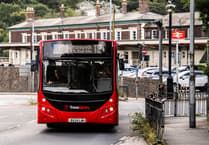Ambulance crews are often only seeing one patient each shift, with up to 30,000 hours of emergency capacity lost every month to handover delays, a committee heard.
The Senedd’s health committee quizzed representatives of the Welsh Ambulance Services University NHS Trust amid concerns about response times and delayed transfers of care.
Colin Dennis, chair of the trust’s board, said ambulance crews report they would regularly see five to eight patients in a shift five years ago but today it is one or, occasionally, two.
Asked if the public can have confidence, Mr Dennis was less than optimistic that issues with patient flow are going to be solved in the short term, pointing to continuing problems with discharge into social care and increasing demand.
He suggested Wales is unlikely to see dramatic changes in the eight-minute response times to “red” calls or the rates at which ambulances are turned around outside hospitals.
According to latest statistics, the ambulance service responds to about 50 per cent of immediately life-threatening calls within eight minutes, significantly short of the 65 per cent all-Wales target.
Jason Killens, chief executive of the trust, apologised to anybody who has had to wait too long for an ambulance or faced waiting in the back of a vehicle before being admitted.
He explained: “The reason that we have response delays in our communities is not because we don’t have enough ambulances, it’s because our ambulances aren't available to us.”
Mr Killens said the root cause of the problem is that ambulances are waiting at A&E departments to hand over their patients,
Pressed about the extent to which delays are compromising patient safety, Mr Killens said an Association of Ambulance Chief Executives report warned of avoidable harm.
He told MSs: “It’s something like one in 10 patients is subject to some level of moderate or severe harm or death associated with a response or handover delay.”
Mr Killens said the number of hours per month of lost emergency ambulance capacity has been static in recent years but it rose from 6,000 in 2018/19 to up to 30,000 now.
Mr Killens, who gave evidence to a coroner’s court this week after a woman waited 22 hours for an ambulance before her death, said the trust has 140 emergency ambulances.
He recognised: “From the public’s perspective – success or failure is how quick we turn up.”





Comments
This article has no comments yet. Be the first to leave a comment.